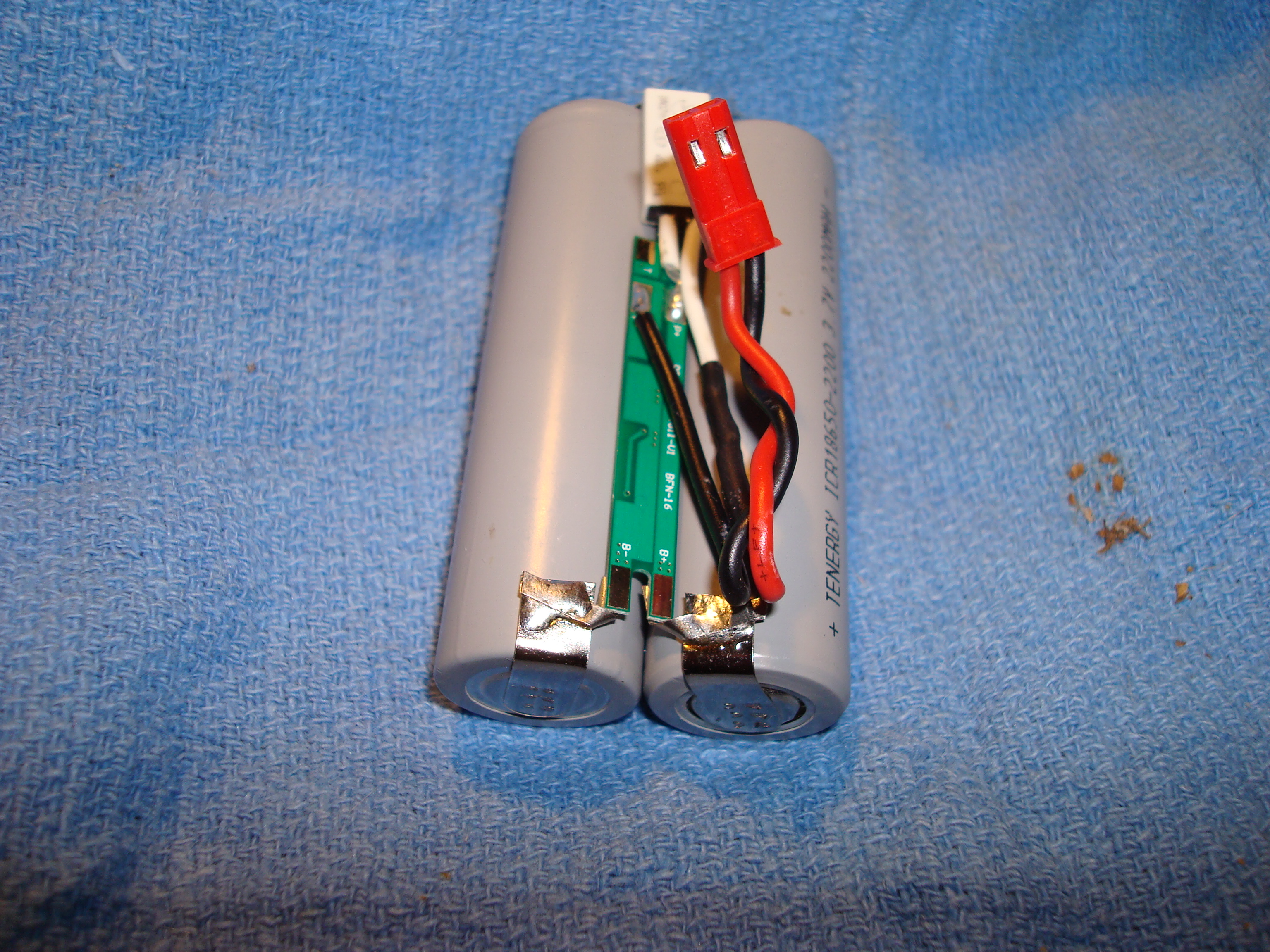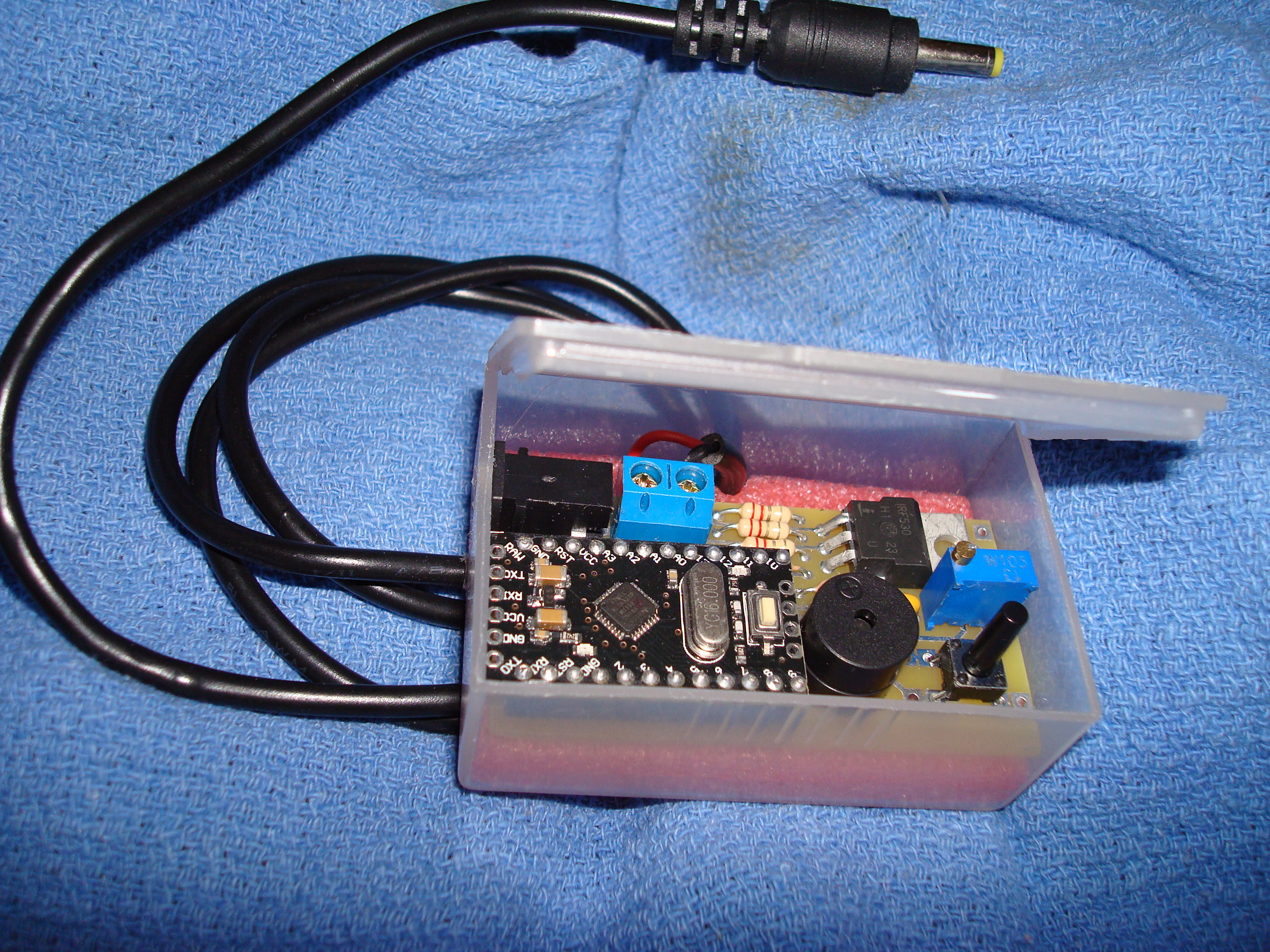This is basically what we see with Solo I. I've not had a chance to check such stuff out (run Solo on a bench power supply rather than battery so you can try different voltage and current settings) Solo I held about 15 or 20 % in reserve, enough for 2 or 3 'emergency sessions'. This is, of course, thin ice country. IIRC Solo I cut off at about 3.1 Volts per cell if the pack is perfectly balanced. That it it locks out at about 6.2 Volts total. But that could be 3.3 and 2.9 Volts? That will be extremely hard on the weak cell, sure to make it worse still.
There's hardware protection too, a protection PCB.
That's it, between the cells. It monitors each cell (two channels) and allows the pack to
output power or take charging, as long as both cells are 'in range' voltage wise. These schemes are usually better protection from over charging, as the trip point has to be set so low (typical numbers are 2.7 Volts or so IIRC) some damage is usually happened by then. BTW the white thing is the thermal safety, it too disconnects the pack on fault, it however automatically resets.
My advice with Solo I is to recharge after the session that only lights one LED and cautiously dig into the reserve if necessary remembering it's a risk to do so. Even if Solo stops you first, when the total drops too far, one of the cells or the other could be on the edge or worse.
By way of reference I ran mine down to 'a bit under 1/4' and charged it back up again. It took 2400mAh to do so (my rig measures total recharge current) so it looks like there's a fair reserve there but the proof is in the checking of that point we've no proof the 'meter' is even linear. Remember, Solo I is not, the top step is twice as big as the others. And, as we just discussed, there is a reserve charge below 'empty'.
I'm with you, nice to know it's there, but not something you want to routinely use. That advice may change when I get a chance to investigate more and measure some stuff, but I doubt it.
OF
Thanks, Arizer. It's plugged in now for it's initial 5 hour + charge as per @OF's advice.









 Hello!
Hello!